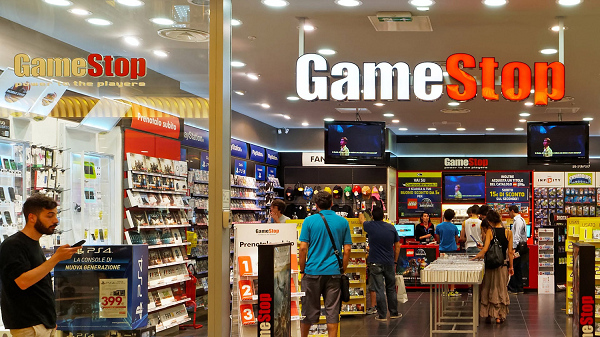In today’s competitive retail landscape, the importance of an efficient supply chain cannot be overstated.
It is the backbone of retail operations, ensuring that products are available to customers when and where they need them, while also minimizing costs and maximizing profitability.
GameStop, a global leader in gaming merchandise and technology retail, provides a compelling case study on how a well-structured and adaptive supply chain can drive retail success.
This article explores the lessons learned from GameStop’s supply chain strategies, highlighting how efficiency, adaptability, and innovation are crucial for retail longevity.
The Role of the Supply Chain in Retail Success
A supply chain encompasses the entire process of sourcing, manufacturing, storing, and delivering products to customers. For retailers like GameStop, whose product offerings are largely time-sensitive and influenced by market trends, an optimized supply chain is not just a competitive advantage—it is a survival strategy.
Efficient supply chains reduce operational costs, improve inventory turnover, and enhance customer satisfaction. For GameStop, these efficiencies became critical during significant market shifts, such as the transition from physical game discs to digital downloads and the rise of e-commerce.
GameStop’s Supply Chain Transformation: Key Milestones
GameStop has undergone several supply chain transformations to adapt to market changes. These changes have been essential to maintaining relevance and profitability in a highly dynamic industry.
1. Embracing Omnichannel Logistics
GameStop recognized early that the future of retail lies in the seamless integration of online and offline experiences. To this end, the company invested heavily in omnichannel logistics. Customers can now browse and purchase products online and choose between home delivery or in-store pickup. This integration required:
- Real-time inventory management: Ensuring that inventory levels across warehouses and retail locations are synchronized in real time.
- Last-mile delivery optimization: Partnering with logistics providers to offer faster and more cost-effective delivery options.
2. Centralized Distribution Model
To streamline operations, GameStop adopted a centralized distribution model, consolidating inventory in strategically located hubs. This approach has multiple benefits:
- Reduced lead times: Products can be shipped faster to stores or customers due to proximity to major markets.
- Lower inventory costs: Centralization reduces the need for excess inventory at individual stores.
3. Adapting to Digital Trends
As the gaming industry shifts toward digital downloads and cloud gaming, GameStop has had to rethink its supply chain strategy. While physical product distribution still plays a role, the company has increasingly focused on services, such as subscription plans and partnerships with game developers.
Challenges Faced and Overcome
Supply Chain Disruptions During the Pandemic
The COVID-19 pandemic exposed vulnerabilities in global supply chains, including GameStop’s. Disruptions in manufacturing, delayed shipments, and fluctuating demand created significant challenges. GameStop responded by:
- Expanding supplier networks to mitigate risks associated with over-reliance on specific regions.
- Using data analytics to forecast demand more accurately and avoid overstocking or stockouts.
Managing Inventory in a Rapidly Evolving Industry
The gaming industry is notorious for its rapid pace of innovation. New consoles, games, and accessories render older models obsolete quickly. GameStop mitigates this risk by:
- Leveraging predictive analytics to anticipate product demand.
- Utilizing just-in-time inventory practices to reduce the cost of unsold inventory.
Lessons Learned from GameStop’s Supply Chain
1. The Importance of Agility
GameStop’s ability to pivot in response to industry shifts underscores the importance of supply chain agility. Retailers must be prepared to adapt quickly to external factors, such as technological advancements, consumer preferences, or geopolitical events.
2. Data-Driven Decision Making
The company’s investment in data analytics has been instrumental in optimizing its supply chain. From demand forecasting to route optimization, data-driven strategies enhance efficiency and customer satisfaction.
3. Building Strategic Partnerships
Partnerships with logistics providers, game developers, and technology firms have helped GameStop strengthen its supply chain. Collaborative relationships are crucial for accessing new technologies, sharing resources, and navigating challenges.
4. Customer-Centric Approach
Ultimately, GameStop’s supply chain revolves around meeting customer needs. Features like omnichannel shopping, real-time inventory updates, and flexible delivery options prioritize convenience and satisfaction.
Looking Ahead: The Future of GameStop’s Supply Chain
As the retail landscape continues to evolve, GameStop is poised to further enhance its supply chain through emerging technologies such as artificial intelligence (AI), blockchain, and robotics. These innovations promise to:
- Improve inventory accuracy and traceability.
- Reduce operational costs through automation.
- Enable faster and more sustainable delivery models.
The company is also likely to focus more on sustainability, aligning its supply chain with environmentally friendly practices to meet growing consumer demand for eco-conscious brands.
Conclusion
GameStop’s journey demonstrates that efficient supply chains are the linchpin of retail success.
By investing in technology, embracing omnichannel logistics, and maintaining a customer-centric approach, the company has navigated industry challenges and positioned itself for future growth. Retailers across sectors can draw valuable insights from GameStop’s strategies, particularly in adapting to technological disruptions and prioritizing agility.
In a world where consumer expectations are higher than ever, supply chain efficiency is not just a competitive advantage—it is a necessity.
GameStop’s story underscores the transformative power of an optimized supply chain in driving retail success.
Also Read
Discover top 10 logistics companies in Kenya
Freight Brokerage: Everything you need to know

